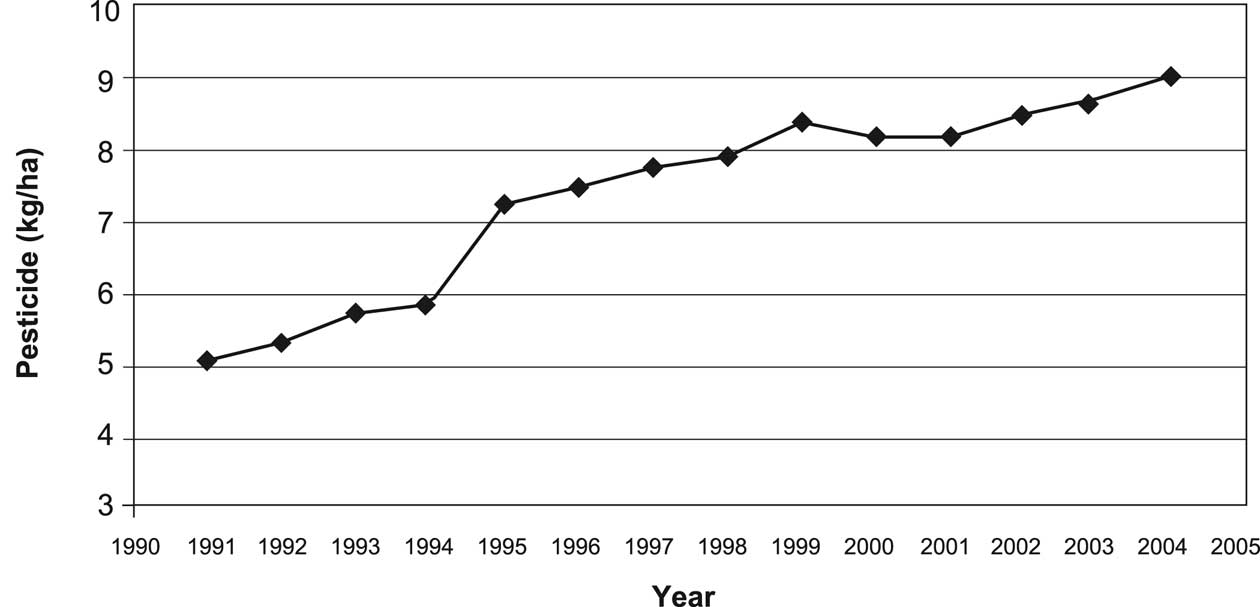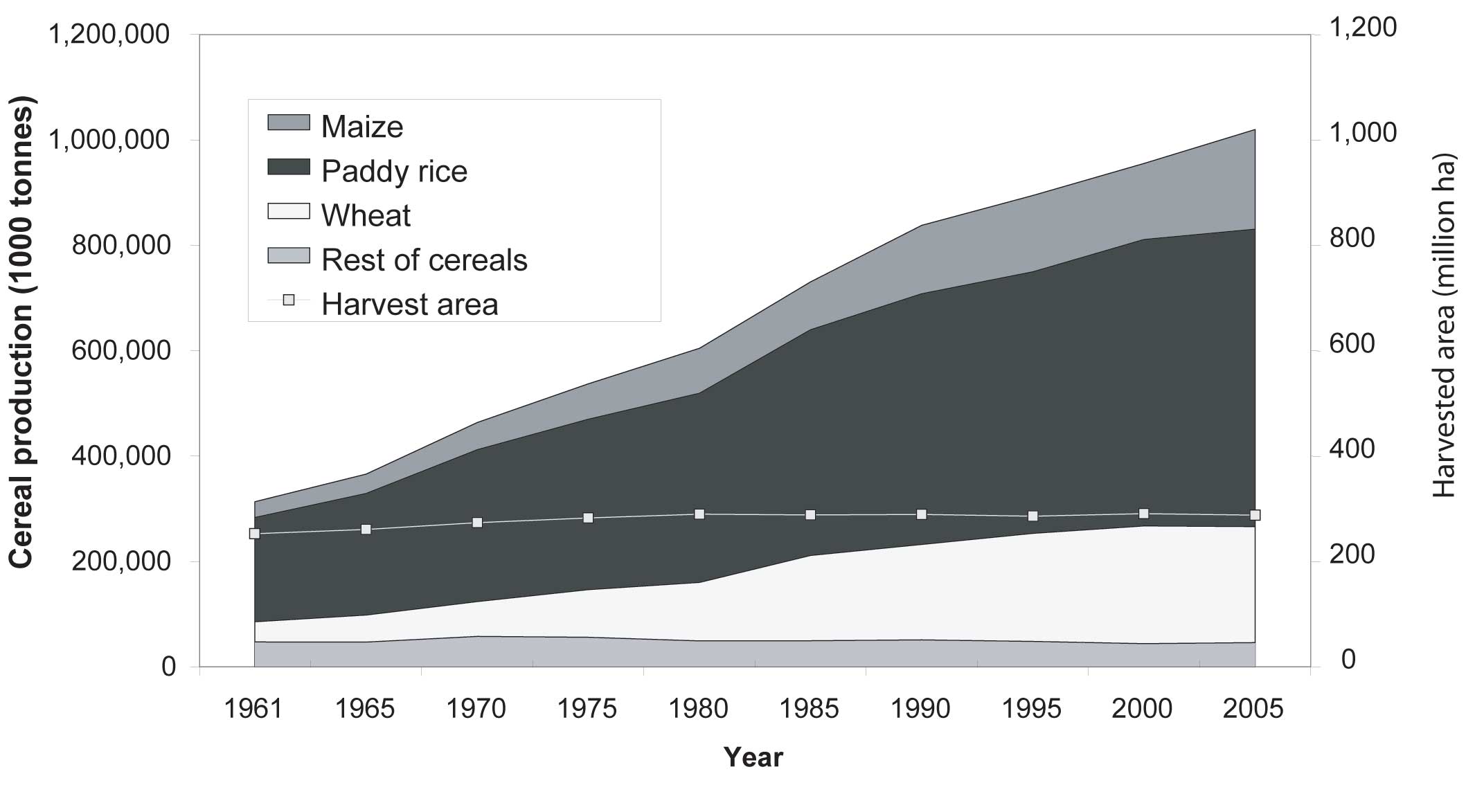
| Previous | Return to table of contents | Search Reports | Next |
| « Back to weltagrarbericht.de | ||
26 | East and South Asia and the Pacific (ESAP) Report

Figure 2-4. Pesticide use in China, 1991-2004. Source: China Ministry of Agriculture, 2005.
remained stable—288 million ha in 2005. However, cereal production increased threefold from 1961 to 2005, with a 2.7% annual growth rate (Figure 2-5). Among the cereal crops, paddy rice accounted for about 55% in 2005, followed by wheat 22%, and maize 19%. Among the ESAP countries, Australia, China, Indonesia, Laos, Pakistan, Philippines and Viet Nam experienced rapid growth in cereal production. For example, China's cereal production had an annual growth rate of 3.1%, mainly driven by maize production the last 20 years in response to the increased demand for animal feed. |
|
rate from 1961 to 2005, followed by the Republic of Korea. For paddy rice, Australia, China, Republic of Korea and Japan were the countries with the highest yields, while the small island countries had the lowest. Laos experienced the highest annual growth rate, followed by China. With wheat production, higher yields were in China, Japan, Republic of Korea and New Zealand; China had the highest annual growth rate. 2.2.3.2 AKST in major crop farming systems—three cases |

Figure 2-5. Harvested area and cereal production in ESAP, 1961-2005. Source: FAO 2006a
| Previous | Return to table of contents | Search Reports | Next |
| « Back to weltagrarbericht.de | ||